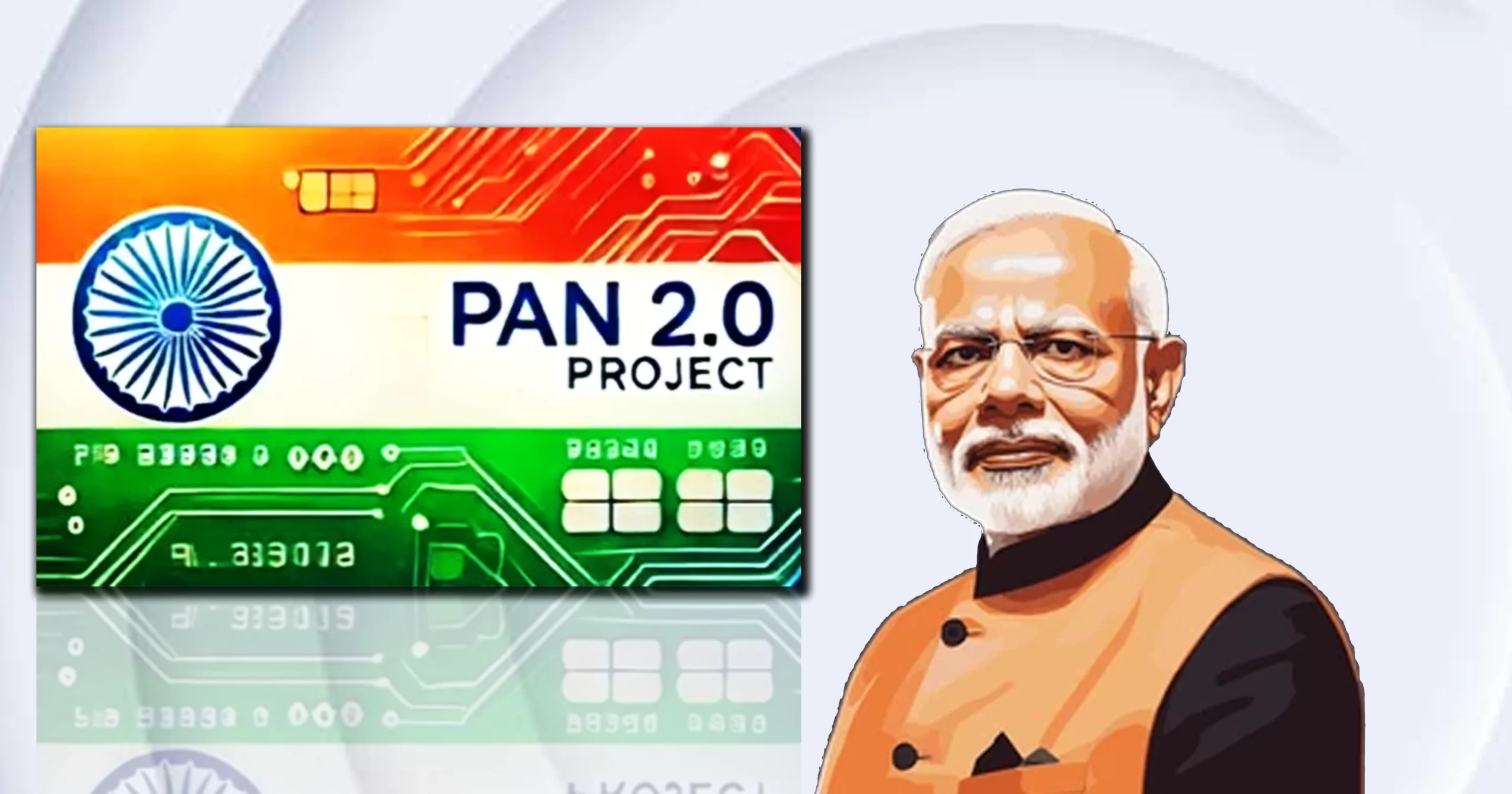
Context (TH | PIB):
The Cabinet Committee on Economic Affairs (CCEA) has approved the PAN 2.0 Project, an e-Governance initiative by the Income Tax Department aimed at re-engineering taxpayer registration services. The project seeks to enhance the digital experience for taxpayers by transforming the current PAN/TAN services ecosystem through technology-driven improvements.
Key Objectives of PAN 2.0 Project
- Re-engineering Business Processes:
- Streamlining and automating the core and non-core activities related to PAN (Permanent Account Number) and TAN (Tax Deduction and Collection Account Number) services.
- Reducing manual interventions to minimize errors and enhance efficiency.
- Enhanced Digital Experience:
- Offering a seamless, user-friendly digital interface for taxpayers to access and manage their PAN/TAN-related services.
- Providing faster and more reliable services for PAN issuance, validation, and updates.
- Integration with Digital India Vision:
- Aligning with the government’s Digital India initiative by promoting the use of PAN as a common identifier across various digital platforms used by government agencies.
- Strengthening the role of PAN in financial and regulatory ecosystems, ensuring smoother inter-agency coordination.
- PAN Validation Service:
- Upgrading the PAN validation system to provide real-time authentication and validation services for various financial and non-financial transactions.
Permanent Account Number (PAN)
- Unique Identifier:
- A ten-digit alphanumeric identifier issued by the Income Tax Department to individuals, companies, and other entities.
- Example: ABCDE1234F.
- Primary Uses:
- Tax Compliance:
- Filing income tax returns, making tax payments, and receiving tax refunds.
- High-Value Transactions:
- Required for purchasing or selling immovable properties, large bank deposits, and investments in securities.
- Tax Compliance:
- Lifetime Validity:
- PAN is issued for the lifetime of the holder and remains unchanged unless explicitly updated.
Tax Deduction and Collection Account Number (TAN)
- Unique Identifier:
- A ten-digit alphanumeric number issued to entities responsible for deducting or collecting tax at source (TDS/TCS).
- Example: ABCD12345E.
- Purpose:
- TAN is essential for businesses, organizations, and individuals who deduct or collect taxes on behalf of the Income Tax Department.
- Common in transactions like salary payments, contractor payments, and rent where tax deduction is mandatory.
- Legal Requirement:
- TAN must be quoted in all TDS/TCS-related communications, returns, and payments with the Income Tax Department.
Cabinet Committee on Economic Affairs (CCEA)
- Overview:
- The CCEA is one of the most important cabinet committees responsible for taking key decisions related to India’s economic policies and programs.
- Chairperson:
- Chaired by the Prime Minister of India and includes cabinet ministers from various ministries.
- Key Functions:
- Economic Policy Coordination:
Directing and coordinating government activities in the economic sector. - Disinvestment Decisions:
Approving proposals for the disinvestment of public sector undertakings. - Monitoring Economic Trends:
Reviewing economic developments and trends at the national and international levels. - Rural Development:
Evaluating and overseeing rural development initiatives and projects. - Industrial Licensing:
Handling industrial licensing for joint sector undertakings and large-scale projects.
- Economic Policy Coordination:
Benefits of PAN 2.0 Project
- Efficiency and Accuracy:
- Faster PAN issuance, validation, and updates with reduced manual errors.
- Improved Taxpayer Services:
- Enhances the taxpayer experience by offering a centralized and streamlined digital platform.
- Strengthened Financial Ecosystem:
- Promotes financial transparency and compliance through the integration of PAN across government systems.
- Better Regulatory Coordination:
- Facilitates seamless data exchange between government agencies, financial institutions, and regulatory bodies.
- Support for Digital India:
- Boosts India’s digital governance framework by making PAN a critical component of the country’s financial and regulatory ecosystem.
Way Forward
- Public Awareness:
- Launch campaigns to educate taxpayers about the new PAN 2.0 system and its benefits.
- Infrastructure Development:
- Strengthen the IT infrastructure to ensure smooth implementation and reduce system downtimes.
- Inter-Agency Collaboration:
- Foster collaboration between the Income Tax Department, banks, and financial institutions for efficient PAN integration.
- Feedback Mechanism:
- Establish a feedback system to address user concerns and improve service quality continuously.
- Data Security:
- Implement robust cybersecurity measures to safeguard taxpayer data and prevent misuse or breaches.




